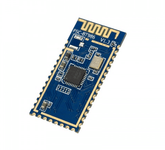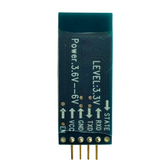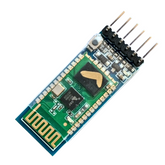What is a Bluetooth beacon?
Summary
Discovering the power of Bluetooth beacons unveils a world of possibilities in the realm of connectivity. In our latest blog, 'What is a Bluetooth Beacon?' we embark on a journey from introduction to implementation. Learn what exactly Bluetooth beacons are and grasp the intricate technology behind them. Dive deep into the practical aspects of implementing these beacons and unlock their myriad benefits, including impressive ROI potential. Don't miss out on this insightful exploration! Read on to revolutionize your understanding of modern connectivity.
What Are Bluetooth Beacons?
Bluetooth beacons are small, low-power wireless devices that transmit Bluetooth Low Energy (BLE) signals to nearby mobile devices like smartphones and tablets. These signals allow the mobile devices to detect the presence of the beacon and estimate its proximity, enabling a range of location-based applications and services.
At its core, a Bluetooth beacon system comprises three main components: the beacons themselves, mobile devices with Bluetooth capabilities, and a cloud-based app or platform that processes the data received from the beacons.

The beacons continuously broadcast their unique identifiers (UUIDs), which are picked up by the mobile devices running the dedicated app. The app then uses these signals to determine the location of the beacons and, consequently, the assets or objects they are attached to.
The construction industry has embraced Bluetooth beacon technology for various purposes, primarily revolving around asset tracking, jobsite security, and workplace safety. By attaching beacons to valuable equipment, tools, and other assets, construction companies can track their real-time location and movements on the jobsite or in storage facilities.
This capability has proven invaluable for preventing theft, streamlining inventory management, and ensuring that the right tools and equipment are available when needed.
Additionally, beacons can be used to monitor personnel movement, enforce safety protocols, and identify restricted or hazardous areas on the construction site.
Furthermore, Bluetooth beacons contribute to increased operational efficiency by optimizing asset utilization, reducing equipment downtime, and enabling data-driven decision-making through comprehensive analytics and reporting.
Understanding Bluetooth Beacon Technology
Beacon Hardware
Bluetooth beacons are compact, often disc-shaped devices designed for easy deployment and long-lasting battery life. Inside their rugged enclosures, beacons house several key components, including a battery, a microcontroller unit (MCU), a Bluetooth radio module, and an antenna.
The battery powers the beacon, while the MCU handles the beacon's operations, such as transmitting signals and managing power consumption.
The radio module, or Bluetooth chipset, facilitates communication with mobile devices, and the antenna ensures efficient signal transmission. Beacons also typically feature identification methods like QR codes or stickers, allowing users to scan and retrieve asset information directly from the beacon.
Beacon Communication
Bluetooth beacons primarily employ one-way communication, where they continuously broadcast their unique identifiers (UUIDs) and, in some cases, sensor data like temperature or acceleration readings.
Mobile devices with the appropriate app can detect these signals and use them to determine the beacon's location and proximity.
The transmission range of a Bluetooth beacon can vary depending on several factors, including the beacon's hardware capabilities, environmental obstacles, and battery consumption settings.
In general, beacons have a maximum range of around 230-260 feet (70-80 meters), although this can be adjusted to optimize battery life or coverage area.
Bluetooth Low Energy (BLE) vs. Classic Bluetooth
Bluetooth beacons almost exclusively use Bluetooth Low Energy (BLE) technology, also known as Bluetooth Smart, rather than Classic Bluetooth.
BLE is designed for low power consumption, making it ideal for battery-powered devices like beacons that need to operate for extended periods without frequent battery replacements.

Compared to Classic Bluetooth, BLE offers several advantages, including faster connection establishment, lower latency, and simplified data exchange protocols.
This makes BLE beacons well-suited for construction applications that require efficient and practical asset tracking and monitoring solutions.
Interference and Compatibility
Bluetooth beacons operate on the 2.4 GHz frequency band, which is also used by other wireless devices like Wi-Fi routers.
To minimize interference, beacons employ frequency-hopping spread spectrum (FHSS) technology, which allows them to rapidly switch frequencies, reducing the likelihood of collisions with nearby devices.

Regarding compatibility, both iOS and Android mobile devices have native support for Bluetooth beacons, ensuring seamless integration with beacon-based applications and services.
As long as a mobile device supports Bluetooth and has the appropriate app installed, it can detect and interact with Bluetooth beacons without any additional hardware or software requirements.
Implementing Bluetooth Beacons
Beacon Deployment Strategies
Implementing a Bluetooth beacon system in a construction environment requires careful planning and strategic deployment.
One key consideration is determining the optimal transmission range for the beacons, which depends on factors like the size of the jobsite, the number of assets to be tracked, and the desired level of precision.

Positioning the beacons and mobile devices or dedicated Bluetooth hubs is also crucial for achieving optimal coverage and accuracy. In larger construction sites, a scalable system with multiple beacons and mobile devices may be necessary to ensure comprehensive asset tracking and monitoring.
Beacon Integrations
To enhance the capabilities of Bluetooth beacons, construction companies can integrate them with various sensors, such as accelerometers for movement detection, temperature sensors for monitoring equipment conditions, or humidity sensors for ensuring optimal storage environments.
Additionally, some beacons support two-way communication, enabling them to receive signals from mobile devices and respond accordingly.

This feature can be useful for specific use cases, such as remotely triggering alerts or updating beacon configurations.
Moreover, Bluetooth beacons can be seamlessly integrated with asset tracking and management software, providing a comprehensive solution for construction companies to monitor and manage their valuable assets effectively.
Best Practices
To maximize the benefits of Bluetooth beacons in construction, several best practices should be followed.
Battery life considerations are crucial, as frequent battery replacements can be costly and time-consuming. Choosing beacons with energy-efficient designs and implementing power-saving strategies can help prolong battery life.
Environmental factors like temperature, moisture, and physical impact should also be taken into account when deploying beacons on construction sites.
Rugged and weatherproof beacon enclosures can protect the devices from harsh conditions and ensure reliable operation.
Finally, security and data privacy measures must be implemented to safeguard the beacon system and the sensitive information it handles. This may include encrypting data transmissions, implementing access controls, and adhering to relevant data protection regulations.
Benefits and ROI of Bluetooth Beacons
Improved Asset Visibility and Tracking
One of the primary benefits of Bluetooth beacons in construction is improved asset visibility and tracking.

By attaching beacons to tools, equipment, and other valuable assets, construction companies can monitor their real-time locations, preventing loss and theft while streamlining maintenance and inventory management processes.
Enhanced Jobsite Security and Safety
Bluetooth beacons contribute to enhanced jobsite security and safety by enabling construction companies to monitor personnel movement and enforce safety protocols.

Beacons can be used to identify restricted areas or hazardous zones, and alerts can be triggered when assets or personnel enter or leave these zones unexpectedly. This capability allows for rapid response to potential safety issues or unauthorized asset movement.
Increased Operational Efficiency
By providing real-time visibility into asset locations and utilization, Bluetooth beacons help construction companies optimize their workflows and reduce equipment downtime.
Data-driven insights gained from beacon-based tracking systems enable informed decision-making and process improvements, leading to increased operational efficiency and productivity.
Cost Savings and ROI
Implementing a Bluetooth beacon system can result in significant cost savings and a substantial return on investment (ROI) for construction companies.
Beacons themselves are relatively low-cost and easy to deploy, with minimal maintenance requirements.

Additionally, preventing asset loss and theft, streamlining inventory management, and increasing productivity can lead to substantial cost reductions and revenue gains, further contributing to a positive ROI.
Conclusion
Bluetooth beacons have emerged as a powerful technology for the construction industry, offering a range of benefits, including enhanced asset tracking, improved jobsite security and safety, increased operational efficiency, and significant cost savings potential.
By leveraging these compact and low-power devices, construction companies can gain real-time visibility into the locations and movements of their valuable assets, monitor personnel activity, and enforce safety protocols, all while optimizing workflows and reducing equipment downtime.
As Bluetooth beacon technology continues to evolve, we can expect to see emerging trends and innovations that further enhance its capabilities and applications in construction.
Integration with other cutting-edge technologies like the Internet of Things (IoT) and artificial intelligence (AI) could pave the way for even more sophisticated asset tracking, predictive maintenance, and automated decision-making processes.
Additionally, new use cases and applications for Bluetooth beacons may emerge, further solidifying their role as a versatile and indispensable tool in the construction industry.
If you're a construction company looking to improve asset management, enhance jobsite security, and optimize operational efficiency, it's time to explore Bluetooth beacon solutions.
By implementing an effective asset tracking and management system powered by beacons, you can unlock significant benefits and gain a competitive edge in the industry.
Don't hesitate to reach out to experts in the field for guidance on selecting the right Bluetooth beacon technology and developing a comprehensive implementation strategy tailored to your specific needs.










